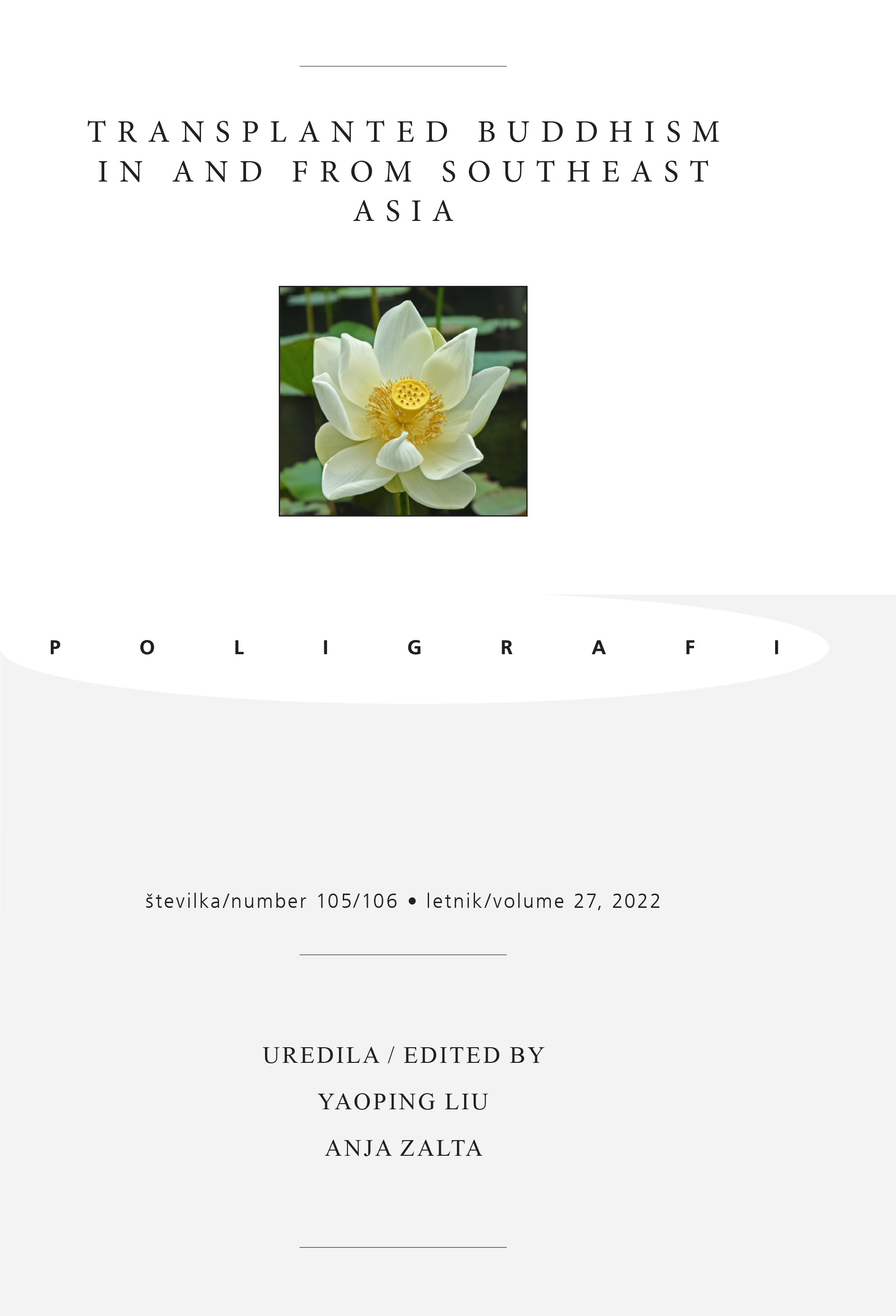Theravāda Buddhism
The Sri Lankan Contribution to its Progress
DOI:
https://doi.org/10.35469/poligrafi.2022.334Keywords:
Theravāda Buddhism, Pāḷi Canon, Commentaries, Sub-commentaries, Manuals, VisuddhimaggaAbstract
Sri Lanka is the only country that has seen Theravāda Buddhism established, preserved, and continue to exist up to the present since the missions to other countries from its birth in India. It is a historical fact that after the Third Buddhist Council, missionaries were dispatched to nine countries for the propagation of Theravāda Buddhism. There is no historical evidence to confirm that any of the nine countries except Sri Lanka was able to preserve Theravāda Buddhism and keep it in its original form throughout the course of time. On the other hand, Sri Lanka secures the honour and credit to have been the centre of Theravāda Buddhism for a considerable time.
The present paper deals with the way Sri Lanka contributed immensely to the establishment, protection, and flourishing of Theravāda Buddhism as a unique tradition of Buddhist thought. In this respect, our attention is focused mainly on the exegetical literature of the Theravāda tradition which will shed much light on both the theoretical and practical aspects of the tradition. The Sri Lankan Mahāvihāra community of monks was responsible for providing a vast exegetical literature which consists of commentaries, sub-commentaries, sub-sub-commentaries, and the compendiums based on the Theravāda canon brought to Sri Lanka. The writing down of the Theravāda Pāḷi canon in Sri Lanka for the first time also marks a unique event in the history of Buddhism. The contribution made by Sri Lanka to preserve the Pāḷi canon by this means was highly instrumental in preserving it in its original form. Further, Sri Lanka was a source of inspiration to other Theravāda Buddhist countries to revitalize their Buddhism in accordance with the more orthodox form of Theravāda.
Downloads
References
Goonesekere, L. R. Buddhist Commentarial Literature. Sri Lanka, Kandy: Buddhist Publication Society, 2008.
Law, Bimala Churn. A History of Buddhist Literature. New Delhi: Rekha Printers Pvt. Ltd, 2000.
Leider, Jacques P. “Text, Linage, and Tradition in Burma: The Struggle for Norms and Religious Legitimacy under King Bodawphaya (1782-1819),” The Journal of Burma Studies, 9 (2004): 82–129, 10.1353/jbs.2004.0000
Karuna, Kusalasaya. Buddhism in Thailand: Its Past and its Present. Sri Lanka, Kandy: Buddhist Publication Society, 1983.
Karunadasa, Y. The Theravāda Abhidhamma: An Inquiry into the Nature of Conditioned Reality. Hong Kong: The Centre of Buddhist Studies, The University of Hong Kong, 2010.
Malalasekara, G. P. The Pāli Literature of Ceylon. Colombo: M. D. Gunasena & Co. Ltd., Reprinted 1958.
Malalasekara, G. P., ed. Mahāvaṃsa-ṭīkā:Vaṃsatthappakāsinī. London: Pali Text Society, 1935.
Rhys Davids, T. W. and J. Estlin Carpenter, ed. Sumaṅgala vilāsinī: Buddhaghosa’s Commentary on the Dīghanikāya, London: Pali Text Society, I. 1886
Takakusu, Junjiro and Makoto Nagai, ed. Samantapāsādikā: Buddhaghosa’s Commentary on the Vinaya piṭka. London: The Oxford University Press, Pali Text Society, 1924, I
Thapar, Romila. Aśoka and the Decline of The Mauryas. Delhi: Oxford University Press, 1997.
Downloads
Published
How to Cite
Issue
Section
License
Open Access Policy and Copyright
This journal provides immediate open access to its content on the principle that making research freely available to the public supports a greater global exchange of knowledge. Users are allowed to read, download, copy, distribute, print, search, or link to the full texts of the articles, or use them for any other lawful purpose, without asking prior permission from the publisher or the author.
Authors who publish with this journal agree to the following terms:
- Authors retain copyright and grant the journal right of first publication with the work simultaneously licensed under the terms of the Creative Commons Attribution license (CC BY) that allows others to share the work with an acknowledgement of the work’s authorship and initial publication in this journal.
- Authors grant the publisher commercial rights to produce hardcopy volumes of the journal for sale to libraries and individuals.
- Authors are able to enter into separate, additional contractual arrangements for the non-exclusive distribution of the journal’s published version of the work (e.g., post it to an institutional repository or publish it in a book), with an acknowledgement of its initial publication in this journal.


